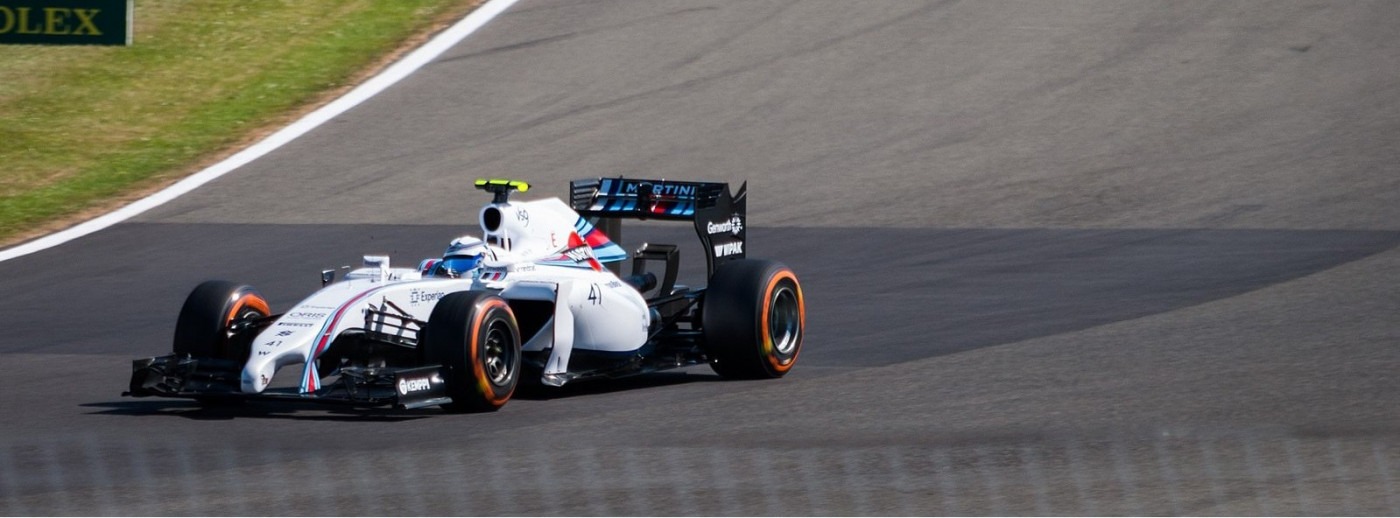Women in motorsport: What the future holds for F1 and female racers
Following the success of this year’s F1 Academy racing series, managing director Susie Wolff took part in a sit-down interview with BBC Sport, as part of which she revealed her aspirations for female participation in top-level motorsport. Wolff, who considers herself to be both an optimist and a realist, “would definitely like to say within 10 years you’ll see a woman starting a Formula 1 race”.
Susie Wolff made history at Silverstone in 2014 as one of the only female drivers to ever compete in an F1 session when she drove a Williams car in the weekend’s first practice session. Unfortunately, this moment was short-lived, as an oil pressure issue shut down the car’s engine, and Wolff’s car was forced to a halt. Except for one other single outing during FP1 at the German GP later that same year, a woman has not competitively driven an F1 car since.
Wolff recalled these events, and the attention she received as a result, claiming she “had to work harder for their respect” (in reference to journalists and perhaps even other drivers) due to an “underlying doubt that I was good enough”. Rather than people focusing on her ability to skilfully drive a Formula 1 car, there was “lots of attention on my gender instead of my performances”.
This means that a woman has not sat on the F1 grid for 48 years
Before Wolff’s outings, few females had participated in the modern era of F1. Italian Maria Teresa de Filippis registered three starts in the 1950s but scored no points. During the 1970s, Italian Lella Lombardi drove in 12 Formula One races, whilst Brit Divina Galica entered three GPs but never actually started them. This means that a woman has not sat on the F1 grid for 48 years.
So why does female participation seem to have reduced over time? Unfortunately, Wolff explains that “female participation… has never gone about five per cent”. Due to a lack of “visible role models” and a talent pool that is nowhere near big enough, it is incredibly difficult for women to reach the highest level of motorsport. With only 20 seats available on the F1 grid anyway, and therefore a highly competitive pathway into the series for any driver, female racers are faced with an even bigger challenge.
It’s about a 10-year journey and we’re kind of just getting started
When asked what she believed the sport would look like in the next decade, Wolff concluded that F1 would be “a much more diverse sport”. Whilst there is “a lot of frustration that things are not moving quickly enough”, she explains that she “can feel how much the sport has changed- it’s gone from strength to strength”. F1 now has an audience which is 40% female, with 18-24-year-olds contributing to the fastest-growing demographic, which highlights the progress being made in terms of promoting inclusivity within the sport.
McLaren F1 CEO Zak Brown also offered his opinion on the subject, explaining that in order to see women in F1 in the near future, “much greater participation at grassroots” is necessary. “It’s about a 10-year journey and we’re kind of just getting started,” he adds. Equally, F1 CEO Stefano Domenicali offered his view, and whilst reluctant to offer a specific time frame, he affirms “it will happen”.
One of the main ways in which female participation in motorsport is being encouraged is through the F1 Academy. The F1-affiliated, F4-level racing series finished its second season last weekend in Abu-Dhabi, which saw British Alpine driver Abbi Pulling take the title with nine wins and 12 poles under her belt. Pulling originally won the championship the previous weekend in Qatar, but after a cancelled race was rescheduled, more points became available, which put Doriane Pin back into title contention, taking the championship fight to the final weekend of the calendar.
If it’s not me or the others in this championship, hopefully, it’s the 10-year-old watching us
As a result of her championship success, Pulling will receive a fully-funded Rodin Motorsport GB3 seat for 2025, as well as 10 FIA Super License Points (40 of which are necessary for an F1 seat). When asked for her opinion on what the future holds for women in F1, she explained that “if not in the next 5-10 years, then we hope that it’s soon”. She also acknowledged her position as a role model for younger girls, stating, “if it’s not me or the others in this championship, hopefully, it’s the 10-year-old watching us”.
Other initiatives seeking to encourage female participation include the grassroots programme, F1 Academy Discover Your Drive, which aims to boost participation from age eight, as well as the F1 Diversity and Inclusion charter, which was introduced last month and looks “to maintain momentum and continue to maximise diversity across Formula 1”.
Ultimately, Wolff recognises the importance of her role as one which ensures the next generation is “inspired to believe it’s not a man’s world” and one which highlights the importance of female participation in motorsport. Next March, the third F1 Academy season will kick off in China, followed by six rounds of racing, taking the series around the world and to 3 new locations, including the Las Vegas Strip Circuit. This, alongside F1’s other initiatives which promote inclusion, will continue to inspire young girls across the globe to fulfil their dreams and take up motorsport in order to make female participation in F1 within the next decade a reality and not merely a fantasy.

Comments